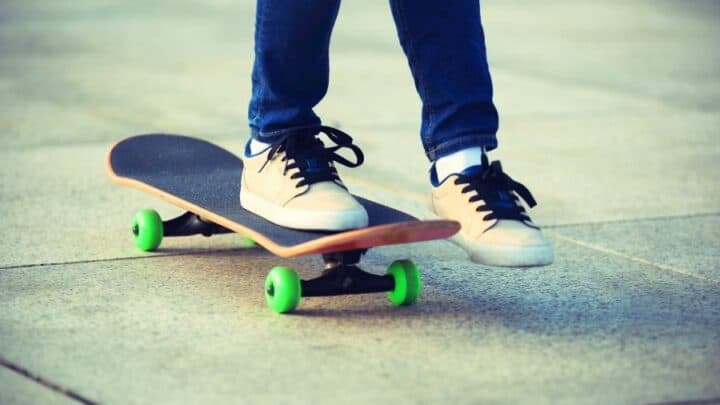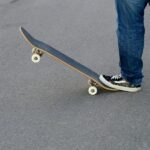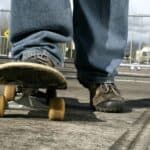A smooth cruise on your skateboard can be an incredibly liberating feeling. It can also be a little terrifying if you suddenly find yourself going too fast.
Whatever your reason for needing to slow down, it’s good to equip yourself with the know-how to do so. It’s a skill all beginners should master.
Table of Contents
How to Slow Down on a Skateboard
The easiest way is to remove your back foot from your board and drag it lightly along the ground until you slow down. You can also redistribute your weight to the back of your board and use your tail as a brake. Power sliding is when you place pressure on two wheels by pushing them outwards in a turning motion to bring yourself to a stop.
How to Slow Down Using your Foot as a Brake
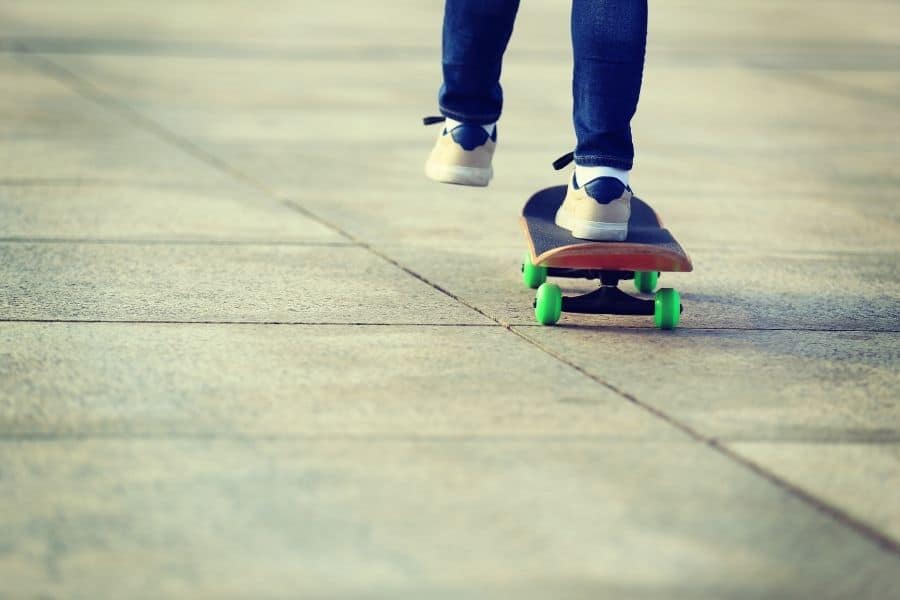
This method sounds like the obvious choice for slowing down, but it can be quite daunting and there is a bit of an art to it.
If you’re using your foot as a brake, the last thing you want is to slam it down onto the ground with force, all at once. This kind of sudden movement will cause your board to jerk forward and probably make you fall.
Instead, lightly drag your back foot (pushing foot) along the ground to slowly reduce your speed.
As you start to slow, return your back foot to the board until you come to a natural stop or you’re moving slowly enough to hop off.
How to Slow Down Using your Board’s Tail as a Brake
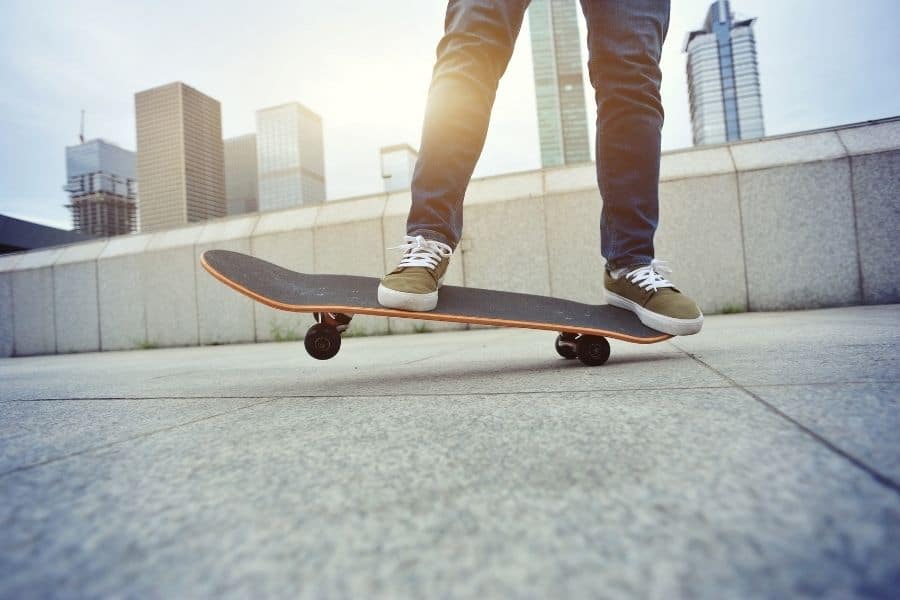
While this method is effective, it can damage your board, and it takes a bit of practice.
To slow yourself down using the back end of your board, you need to redistribute your weight to your back foot as you’re moving.
Then, lower the tail of your board to the ground (front wheels in the air) until it is scraping along the surface of the ground.
This goes without saying, but this slowing method will cause some wear and tear to the tail end of your board.
It can also be quite difficult to perform as you may initially accidentally kick your board out from underneath yourself.
To prevent sustaining too many injuries, invest in a helmet and some knee and elbow pads while you’re still learning.
How to Slow Down by Power Sliding
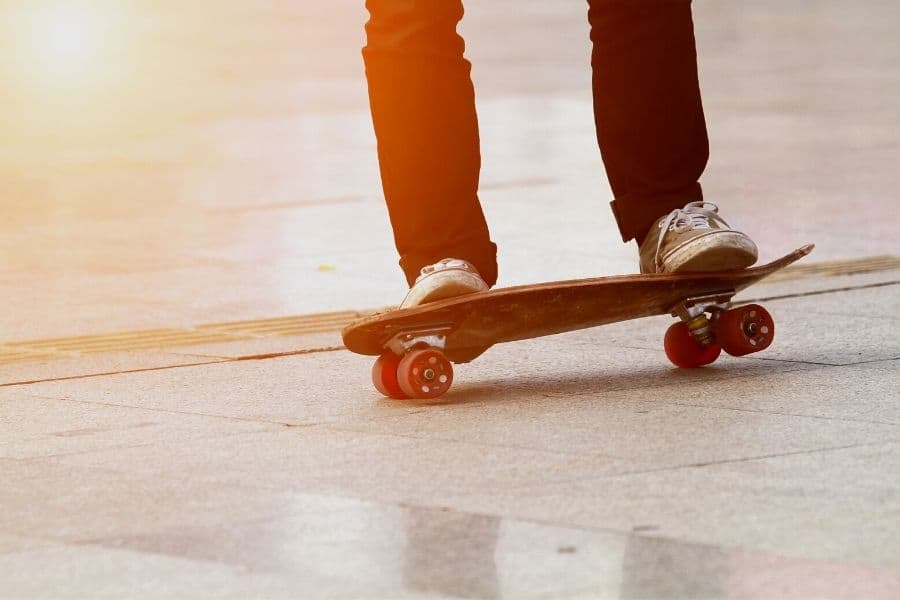
Power sliding is the best way to slow down once you know how. Like the first 2 tactics, some practicing is needed.
First, let’s talk about carving, as this forms part of power sliding and is a great skill to learn.
Carving is when your turn your board from side to side using leverage from turning your shoulders and shifting your body weight.
The bigger your turns, the more you’ll lose speed. In fact, it may even be possible to reduce your speed enough that you don’t need to do anything else.
But while carving slows you down by default but may not be enough to bring you to a complete stop, which is where power sliding comes in.
To power slide, you need to shift your weight to put pressure on your back wheel, turning your board sideways and sliding it along the ground.
Most of your weight will be on your back heel, and your one back wheel will take the brunt of the braking pressure.
Pressing the board out away from you at an angle should slow you down or bring you to a halt.
Why You Need to Know How to Slow Down on a Skateboard
Before we get into the nitty-gritty details of how to come to a stop on a skateboard, let’s briefly talk about why it’s important to learn this skill.
Not only will this move give you more board control, but it also keeps you safe.
Because of the areas in which people usually skate (parks, streets, sidewalks), there are some potential hazards that you can avoid if you know how to stop, like cars.
Going too fast on your skateboard also causes you to eventually lose balance and fall.
As you become more experienced, knowing how to slow yourself down can also become an integral part of performing tricks and jumps.
Frequently Asked Questions about How to Slow Down on a Skateboard
What can cause a skateboard to move slowly?
If you find that skateboard is not moving as quickly as it should, it may be that your axel nuts are over-tightened. This will prevent your wheels from turning as fast as they’re able to and cause unnecessary and potentially damaging pressure against your bearings. Spin your wheels with your finger and to see if they can rotate freely.
How much weight can a skateboard hold?
Concerning speed and ease of movement, the maximum recommended weight for a skateboard is roughly 270 pounds (123 kilograms), but it depends on how fast you want to go and what kind of tricks you plan to perform. It also differs for longboards and electric skateboards, which can handle more weight.
How long should I practice if I want to become a skateboarding pro?
When you’re just starting, you should try to skateboard for a few hours at least three times a week. This will get you comfortable and balanced, allowing you time to learn the basics. Once you’re confident, you can start learning tricks. Professional skateboarders practice for 5 to 6 hours every day.
Slowing Down on a Skateboard: An Afterword
Skateboarding is without a doubt one of the most freeing pastimes that you can pursue, but there are, of course, well-known risks associated with it.
Most of these involve potential injuries caused by falling, which is why it’s so important that you learn to control your speed and your board.
When you do, you’ll have more confidence in your movement and expand your abilities from there.
